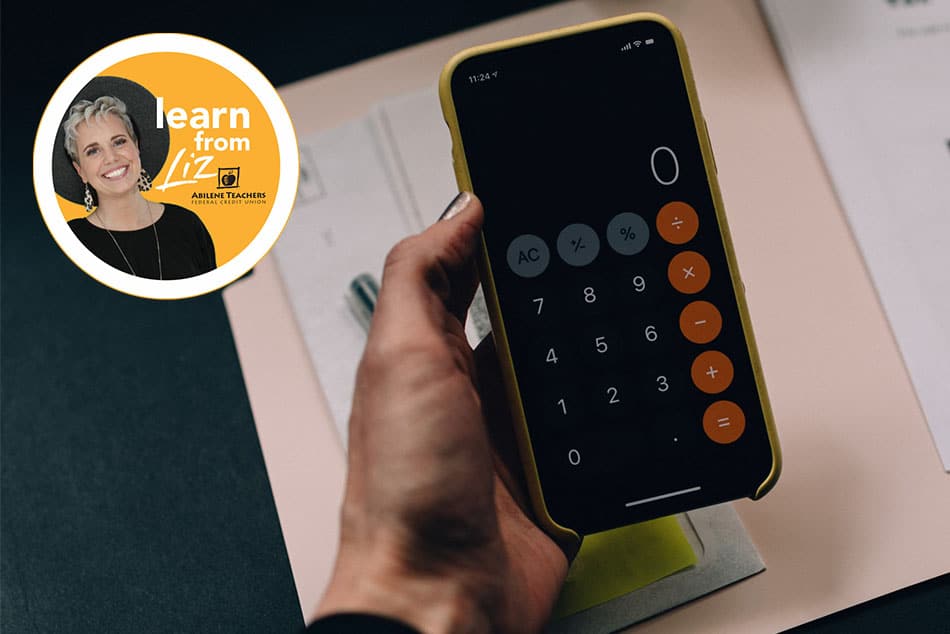Your Guide to a Stress-Free Homebuying Budget

Buying a new home is one of life’s most exciting milestones. You’re not just buying a property; you’re creating a space for future memories. However, let’s be honest—the financial aspect can feel overwhelming. Think of us at Abilene Teachers FCU as your financial coach, here to guide you through every step.
This guide will help you master your budget before you start looking, during the house-hunting process, and after you receive the keys, ensuring your journey to homeownership is as smooth as possible.
Part 1: Before You Shop – Building Your Financial Foundation
A strong start makes all the difference. Before you even browse listings, you need a clear picture of what you can comfortably afford.
1. The Down Payment: More Flexible Than You Think
The old rule of thumb was that you needed 20% of the home’s price for a down payment. While a larger down payment can lower your monthly mortgage, it’s no longer a strict requirement! Many loan options, including FHA loans, allow for down payments as low as 3.5%.
- Your Goal: Start saving early. Set up a dedicated savings account and automate your contributions. Even small, consistent savings add up.
2. Closing Costs: The “Other” Upfront Expense
This is the one that surprises many first-time buyers. Closing costs are fees for the services that finalize the real estate transaction. They typically range from 2% to 5% of the loan amount. These can include:
- Appraisal Fee: Pays for an assessment of the home’s value. (Most of the time, this is paid prior to closing and is then credited on the final closing disclosure.)
- Title Insurance: Protects you and the lender from claims against the property’s title.
- Loan Origination Fee: Charged by the lender for processing the loan.
- Inspection Fees: The cost of hiring a professional to inspect the home’s condition. (Most of the time, this is paid prior to closing and is then credited on the final closing disclosure.)
- Your Goal: When you calculate your savings goal, budget for the down payment and an estimated amount for closing costs.
3. The Power of Pre-Approval
Getting pre-approved for a mortgage from a trusted lender, such as ATFCU, is your most important first step. It shows sellers you’re a serious buyer and gives you a firm price range to work within, preventing you from falling in love with a home outside your budget.
Part 2: During the Hunt – Staying on Track
You’re pre-approved and ready to shop! This is the fun part, but it’s also where budgets can get derailed.
1. “Must-Haves” vs. “Nice-to-Haves”
Make a list. What do you absolutely need (e.g., number of bedrooms, a safe neighborhood)? And what would be nice, but not essential (e.g., a swimming pool, granite countertops)? This list will serve as your anchor, helping you make logical, rather than purely emotional, decisions.
2. Budget for the Unexpected
A home inspection may reveal that the HVAC system requires repairs or that the roof has a few years of life left. It’s wise to have a separate cushion of cash set aside for immediate repairs or to cover a potential gap if the home appraises for less than your offer.
3. Protect Your Credit Score
Once you’re in the homebuying process, it’s essential that your financial situation is as stable as possible. Avoid making large purchases on credit (such as a new car or furniture), opening new credit cards, or changing jobs. Any of these can jeopardize your loan approval at the last minute.
Part 3: Closing and Beyond – The New Homeowner Budget
You’ve found the one and your offer was accepted! You’re almost there.
1. Preparing for “Cash to Close”
A few days before closing, you’ll receive a statement detailing the exact amount you need to bring. This is your “cash to close,” which includes your down payment minus your earnest money deposit, plus your closing costs and any prepaid items, such as property taxes or homeowners’ insurance.
2. Your “First Month” Fund
Your budget doesn’t stop at the closing table. The first month involves a flurry of expenses:
- Moving costs (trucks, movers, boxes)
- Utility setup fees
- Immediate needs (curtains, new locks, a lawnmower)
- The celebratory pizza on the floor of your new, empty living room!
3. The True Cost of Homeownership
Your monthly mortgage payment (PITI: Principal, Interest, Taxes, and Insurance) is just the beginning. A good rule of thumb is to budget 1-3% of your home’s purchase price annually for maintenance and unexpected repairs. A pipe could leak, or an appliance could break. Being prepared prevents these surprises from becoming financial crises.
Your Coach is Here to Help
Budgeting for a home is a marathon, not a sprint. But with careful planning, it’s a race you can win.
Ready to take the first step? The mortgage team at Abilene Teachers FCU is here to answer all your questions and get you started on the path to homeownership.


